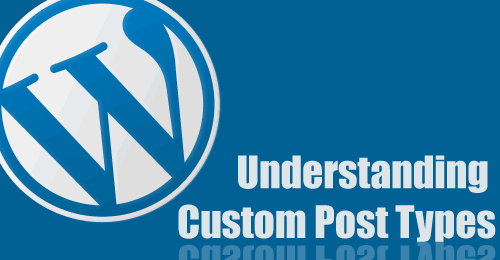
This is the new WordPress Soup: Custom Post Types, Post Formats, Custom Taxonomies, and Custom Fields/Meta Boxes. First and foremost, since we have already talked about what custom post types are, let's define the other two: post formats and custom taxonomies.
Post Formats
 Post formats are not post types, that is, they are not content types. Instead, they are varying types of posts. They are posts with varying formatting. For example, consider the following:
Post formats are not post types, that is, they are not content types. Instead, they are varying types of posts. They are posts with varying formatting. For example, consider the following:
- a shared link should have a link as its focus.
- a video should have a video as its focus, maybe its only content
- an image should have an image as its focus, maybe again, its only content
- a quote should have a quote as its focus, maybe its only content
- Etc.
As Mark Jaquith states:
A Post Format is a formatting designation made to a post. For example, a post could be a short “aside,” or a Kottke.org-style link post, or a video post, or a photo gallery post. The data you input might be slightly different — video post should contain a video, an aside should probably not be very long, a link post should have a link. And the way that the post is displayed on the site might be very different — an aside will typically be displayed without a title, a link post may have the title point to the link. A video post may be wider, or have social sharing buttons auto-appended. But they’re all still posts. They still show up in your feed, and you still find them in the Posts section of the WordPress backend.
There are two major differences between custom post types and post formats. They are:
- Post formats will appear in the main RSS. Custom post types do not appear in the RSS feed by default without further coding (though in my opinion this should be part of the registration coding as it is with searching).
- Post formats are a WordPress "standardized convention." In other words, instead of using categories to customize output and display (that may or may not be supported across themes/frameworks), post formats provides a standard method of doing this.
Simply, think Tumblr! StudioPress's Tapestry Child Theme makes good use of Post Formats.
As far as WordPress is concerned, there are ONLY 10 Post Formats available to users/theme developers. They are:
- standard - regular post
- aside - Typically styled without a title. Similar to a Facebook note update.
- gallery - A gallery of images. Post will likely contain a gallery shortcode and will have image attachments.
- link - A link to another site.
- image - A single image.
- quote - A quotation. Probably will contain a blockquote holding the quote content. Alternatively, the quote may be just the content, with the source/author being the title.
- status - A short status update, similar to a Twitter status update.
- video - A single video.
- audio - An audio file. Could be used for Podcasting.
- chat - A chat transcript
Now, just like thumbnail images, post formats must be activated by the theme.
[php]add_theme_support( 'post-formats' , array( 'aside' , 'chat' , 'gallery' , 'image' , 'link' , 'quote' , 'status' , 'video' , 'audio' ) );[/php]
To style post formats, use the following new CSS classes:
Standard: Normal CSS
Aside: .format-aside {}
Audio: .format-audio {}
Chat: .format-chat {}
Gallery: .format-gallery {}
Image: .format-image {}
Link: .format-link {}
Quote: .format-quote {}
Status: .format-status {}
Video: .format-video {}
Custom Taxonomies
Think Categories and Tags. These both represent two types of taxonomies: hierarchical, where terms can have a parent-child relationship (e.g.,categories) and non-hierarchical, where all terms are equal (e.g., tags). Custom taxonomies give you the ability to name and create taxonomies that act like Tags and Categories but are named whatever you'd like to name them.
Other built-in taxonomies include Link Category and Nav Menu. So what are some custom taxonomies? These can be determined by custom post types and can be whatever you need them to be; for example, an employee custom post type could use an employee departments hierarchical taxonomy. Another example could be a movie custom post type utilizing multiple taxonomies of genre, director, stars/actors, etc. (More information forthcoming...)
Custom Fields and Meta Boxes
These are designated areas to input information on a per post/custom post (or content entry) basis. Generally speaking, if the Title, Editor, etc. that is found on a post won't do what you want it to do with the content, then most people add custom fields that creates an easy way to input content as well as display the content. Custom Meta Boxes and Custom Fields are sets of additional editable fields that may be added to any post type, whether page, post, or a custom post type. The custom fields can be used to store any sort of content/data that you want. They are often single line input boxes, checkboxes, dropdown boxes, paragraph text areas, radio buttons, etc. There will be more on this later as Custom Meta Boxes and Custom Fields are usually extremely important to Custom Post Types. (More information forthcoming...)
Summary
So, in short, custom post types are content types for custom storing with custom displays on the backend and front end. Post formats are types or variations of displaying content on the front end only coming with a standardize set of 10 choices. Custom taxonomies are terms, whether hierarchical or not, that are used for organizing content. Custom Meta Boxes and Fields are designated areas to add more information beyond the standard title, editor, etc. (which are displayed via built-in meta boxes).
More Information/Further Reading
Post Formats Links
- Otto: Post types and formats and taxonomies, oh my!
- Andrew Nacin: On standardized post formats
- WPBeginner: What, Whys, and How to’s of Post Formats in WordPress 3.1
- Mark Jaquith: Post Formats vs. Custom Post Types
- Lisa Sabin-Wilson: WordPress 3.1 Post Formats Reference
- WordCast: WordPress Post Formats Tutorial: Add Tumblr Style Features To Your Blog with WordPress 3.1
- WP Engineer: Post Formats – More Creative Ways For A Theme
- Flashing Cursor: Intro to Post Formats in WordPress 3.1
Custom Taxonomies Links
- Tammy Hart: Custom Post Types and Taxonomies
- net tuts+: Introducing WordPress 3 Custom Taxonomies
- 1WD.CO: The Essential Guide to WordPress 3.0 Custom Taxonomies
- WP Dad: A Short Introduction to WordPress 3.0 for Beginners


Leave a Reply